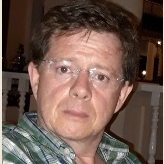Nitrates Pollution in Water: Sources, Pathways and Receptors
A special issue of Water (ISSN 2073-4441). This special issue belongs to the section "Water Quality and Contamination".
Deadline for manuscript submissions: closed (31 July 2021) | Viewed by 11427
Special Issue Editors
Interests: groundwater management; groundwater contamination risk; water–rock interactions; groundwater flow modeling; groundwater–surface water interactions; land degradation and surface water quality; spatial decision support systems in public water supply planning; conjunctive use of water resources; water security
Special Issues, Collections and Topics in MDPI journals
Interests: flood-detention basins; rainwater harvesting for drought effects attenuation; hydrologic modeling at the catchment scale; water resources management; quality data; integrated monitoring of climate and environmental impacts; sustainability in agri-food and forestry ecosystems
Special Issues, Collections and Topics in MDPI journals
Special Issue Information
Dear Colleagues,
Groundwater contamination by nitrate is a widespread problem all over the world. Aquifer pollution causes public health problems and environmental degradation of ecosystems. All these negative effects can be minimized with an integrated groundwater management and a good governance to mitigate the risks of nitrate contamination. In order to ensure sustainable use and protection of groundwater aquifers, water resources specialists and decision makers need information on the scope, distribution, and severity of aquifer nitrate contamination. In other words, the identification of nitrate sources, early diagnosis of possible changes, and knowledge for selecting effective remediation strategies are essential.
In compliance with these requirements, the contributors of this Special Issue are invited to submit papers focusing on the presentation of models and applications following the concept of “pressure–pathway–receptor”, whereby the information on point and nonpoint sources of water pollution (fertilizer, livestock manure, septic tanks, municipal and industrial effluents) is combined with aquifer vulnerability parameters (depth of water table, recharge, aquifer material, soil type, topography, and hydraulic conductivity, among others) and eventually with biogeochemical models, to explain nutrient yields arriving at the receptor (groundwater).
We believe that this Special Issue will help to bring to the attention of land use planners, water resources managers, and the general public that conservation of groundwater resources begins with a reliable land use and implementation of conservation measures, and that deviation from this practice inevitably leads groundwater resources to danger and ultimately to collapse as a service provider.
Prof. Dr. Fernando A.L. Pacheco
Prof. Dr. Luís Filipe Sanches Fernandes
Guest Editors
Manuscript Submission Information
Manuscripts should be submitted online at www.mdpi.com by registering and logging in to this website. Once you are registered, click here to go to the submission form. Manuscripts can be submitted until the deadline. All submissions that pass pre-check are peer-reviewed. Accepted papers will be published continuously in the journal (as soon as accepted) and will be listed together on the special issue website. Research articles, review articles as well as short communications are invited. For planned papers, a title and short abstract (about 100 words) can be sent to the Editorial Office for announcement on this website.
Submitted manuscripts should not have been published previously, nor be under consideration for publication elsewhere (except conference proceedings papers). All manuscripts are thoroughly refereed through a single-blind peer-review process. A guide for authors and other relevant information for submission of manuscripts is available on the Instructions for Authors page. Water is an international peer-reviewed open access semimonthly journal published by MDPI.
Please visit the Instructions for Authors page before submitting a manuscript. The Article Processing Charge (APC) for publication in this open access journal is 2600 CHF (Swiss Francs). Submitted papers should be well formatted and use good English. Authors may use MDPI's English editing service prior to publication or during author revisions.
Keywords
- Nitrate pollution in groundwater
- Aquifer vulnerability
- Point and nonpoint pollution sources
- Sustainable development goals
- Land use
- Land capability
- Conservation measures
- Mitigation
- Remediation
Benefits of Publishing in a Special Issue
- Ease of navigation: Grouping papers by topic helps scholars navigate broad scope journals more efficiently.
- Greater discoverability: Special Issues support the reach and impact of scientific research. Articles in Special Issues are more discoverable and cited more frequently.
- Expansion of research network: Special Issues facilitate connections among authors, fostering scientific collaborations.
- External promotion: Articles in Special Issues are often promoted through the journal's social media, increasing their visibility.
- Reprint: MDPI Books provides the opportunity to republish successful Special Issues in book format, both online and in print.
Further information on MDPI's Special Issue policies can be found here.






